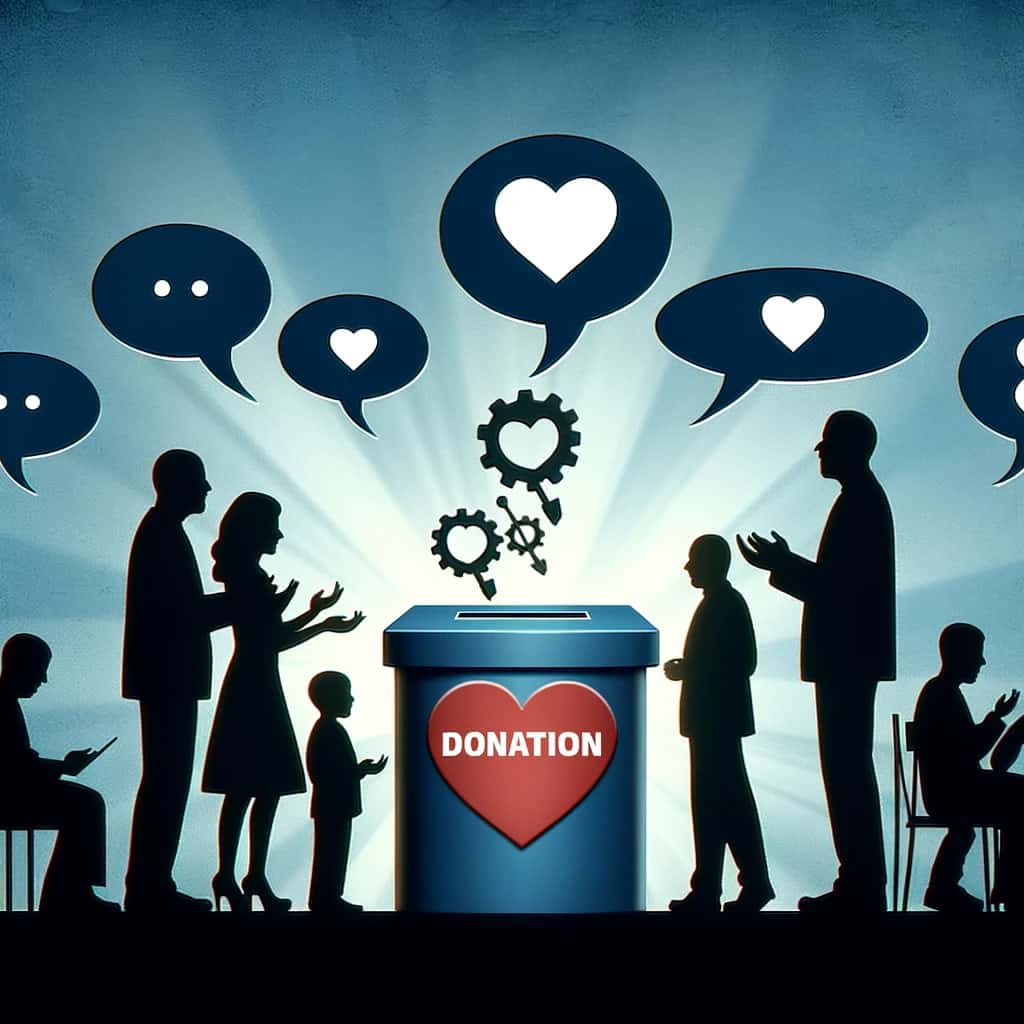In the ever-evolving landscape of nonprofit fundraising, the shift towards digital platforms has been a transformative movement reshaping how organizations connect with benefactors.
Yet, as we navigate this digital age, the question arises: Can traditional fundraising methods still hold their ground? The answer lies in a harmonious blend of old and new, integrating digital and traditional fundraising strategies to create a comprehensive approach that resonates in today’s interconnected world.
The Rise of Digital Fundraising
Digital fundraising has opened a plethora of opportunities for nonprofits, allowing them to reach a wider audience with the click of a button. From social site campaigns to online donation platforms, the digital realm offers a diversity of tools designed to engage donors and streamline the donation process.
But what makes digital fundraising so compelling?
- Wider Reach: Digital platforms break geographical barriers, enabling fundraisers to connect with potential supporters worldwide.
- Cost-Effectiveness: Compared to traditional methods, digital campaigns can be more budget-friendly, offering a higher ROI.
- Real-Time Engagement: Social networks and online platforms allow for immediate interaction with donors, fostering a sense of community and involvement.
- Enhanced Analytics: Digital tools provide detailed data analytics, enabling targeted and efficient fundraising strategies.
- Global Participation: Online fundraising events can engage participants from around the globe, expanding the donor base beyond local communities.
- Automated Giving Options: Digital platforms offer automated recurring donation options, making it easier for benefactors to contribute regularly.
- Increased Visibility through SEO: A strong online presence can enhance a nonprofit’s visibility through search engine optimization, attracting more potential supporters.
Yet, as we marvel at the efficiency of digital fundraising, one cannot help but wonder: Does the impersonal nature of online interactions detract from the authenticity of donor engagement?
The Value of Traditional Fundraising Techniques
Despite the digital surge, traditional fundraising techniques like direct mail, in-person events, and phone solicitations remain invaluable. They offer a personal touch that digital methods often lack, creating a deeper connection with donors.
Traditional fundraising complements digital strategies with unique advantages.
- Personal Touch: In-person interactions build stronger relationships, making benefactors feel more connected to the cause.
- Community Engagement: Traditional events bring people together, fostering a sense of community and shared purpose.
- Tangible Materials: Direct mail campaigns provide physical materials that can serve as tangible reminders of the nonprofit’s mission and needs.
- Localized Impact: Traditional fundraising methods often have a localized focus, allowing supporters to see the direct impact of their contributions in their community.
- Long-term Relationships: In-person meetings and events facilitate the building of long-term relationships with key benefactors through personal engagement.
- Flexibility in Presentation: Traditional methods allow for a more flexible presentation of the cause, tailored to the audience’s immediate reactions and feedback.
In essence, traditional fundraising techniques continue to play a critical role in building and maintaining donor relationships, offering a personalized approach that complements digital efforts.
Integrating Digital and Traditional Strategies
Today, nonprofits must integrate digital and traditional strategies to optimize fundraising and reach wider audiences. This cohesive approach engages supporters across channels, maximizing impact.
1. Unified Messaging Across Channels
Consistency in messaging across digital and traditional channels enhances brand recognition and trust among benefactors and stakeholders. It ensures a seamless experience for supporters, regardless of the platform they engage with.
- Develop a comprehensive messaging guideline that aligns messaging tone, language, and visuals across all channels.
- Utilize tools like social media scheduling platforms to synchronize digital posts with traditional marketing campaigns.
- Train staff and volunteers to communicate the organization’s mission consistently in both online and offline interactions.
- Incorporate traditional campaign slogans or key messages into digital content and vice versa.
- Regularly review and update messaging strategies to adapt to changes in audience preferences and market trends.
2. Cross-Promotion and Integration
Leveraging the strengths of digital and traditional channels involves cross-promoting initiatives to widen reach and engagement. Integration ensures that each platform complements the other, maximizing exposure and impact.
- Include social media handles and website URLs in print materials and vice versa to drive traffic and engagement across platforms.
- Embed digital content such as videos or interactive features in traditional mediums like brochures or event displays.
- Host live streams or virtual events to complement traditional fundraising galas or community gatherings.
- Encourage supporters to share offline experiences online through branded hashtags or user-generated content campaigns.
3. Data Integration and Analysis
Seamlessly integrating digital and traditional data allows nonprofits to gain deeper insights into donor behavior and preferences. By analyzing both sets of data together, organizations can refine their strategies for more targeted outreach and personalized engagement.
- Invest in tools or software that can centralize and integrate data from various sources, including online donations, event attendance, and direct mail responses.
- Implement tracking mechanisms such as unique URLs or QR codes in traditional materials to monitor online conversions and engagement.
- Use data analytics platforms to identify patterns and trends across digital and traditional channels, informing future campaign decisions.
- Segment donor lists based on combined data points to tailor communications and appeals for better response rates.
- Regularly audit data collection and storage practices to ensure compliance with privacy regulations and maintain data integrity.
4. Multi-Channel Donation Options
Providing supporters with multiple avenues to contribute fosters inclusivity and accessibility. Integrating digital and traditional donation channels ensures that supporters can give in ways that are convenient and comfortable for them.
- Offer online donation options on the organization’s website and social media platforms, with seamless integration for payment processing.
- Include QR codes or text-to-donate information on print materials and event signage for easy mobile giving.
- Implement traditional fundraising events alongside digital crowdfunding campaigns to appeal to different donor preferences.
- Provide recurring donation options both online and through direct mail to encourage sustained support.
5. Collaborative Campaign Planning
Aligning digital and traditional strategies requires collaboration and communication across departments and teams within the organization.
By involving stakeholders from both digital and traditional marketing teams in campaign planning, fundraisers can ensure holistic and cohesive strategies.
- Hold cross-functional brainstorming sessions to generate ideas that incorporate both digital and traditional elements.
- Develop campaign timelines that outline key milestones and tasks for each channel, ensuring alignment and coordination.
- Assign clear roles and responsibilities to team members for executing various aspects of integrated campaigns.
- Establish regular check-ins and debriefs to assess campaign performance and identify areas for improvement.
- Foster a culture of innovation and experimentation, encouraging team members to propose and test new ideas for integrated strategies.
By implementing these strategies, you can harness the combined power of digital and traditional approaches to maximize your fundraising efforts and achieve mission-driven goals.

Final Thoughts | Mastering the Fusion of Fundraising Strategies
In today’s digital landscape, merging digital and traditional fundraising approaches is a must for nonprofits aiming to supercharge their impact.
By embracing this dynamic blend, organizations can tap into the broad reach and efficiency of digital tools while still harnessing the personal touch and engagement inherent in traditional methods.
As we navigate this hybrid terrain, let’s keep in mind that the essence of fundraising, whether in pixels or paper, lies in genuine human connections. It’s about crafting authentic interactions that ignite action and cultivate enduring bonds with supporters.
Ready to elevate your fundraising game? Invest in cutting-edge fundraising management software today and unlock the full potential of your organization’s efforts.




